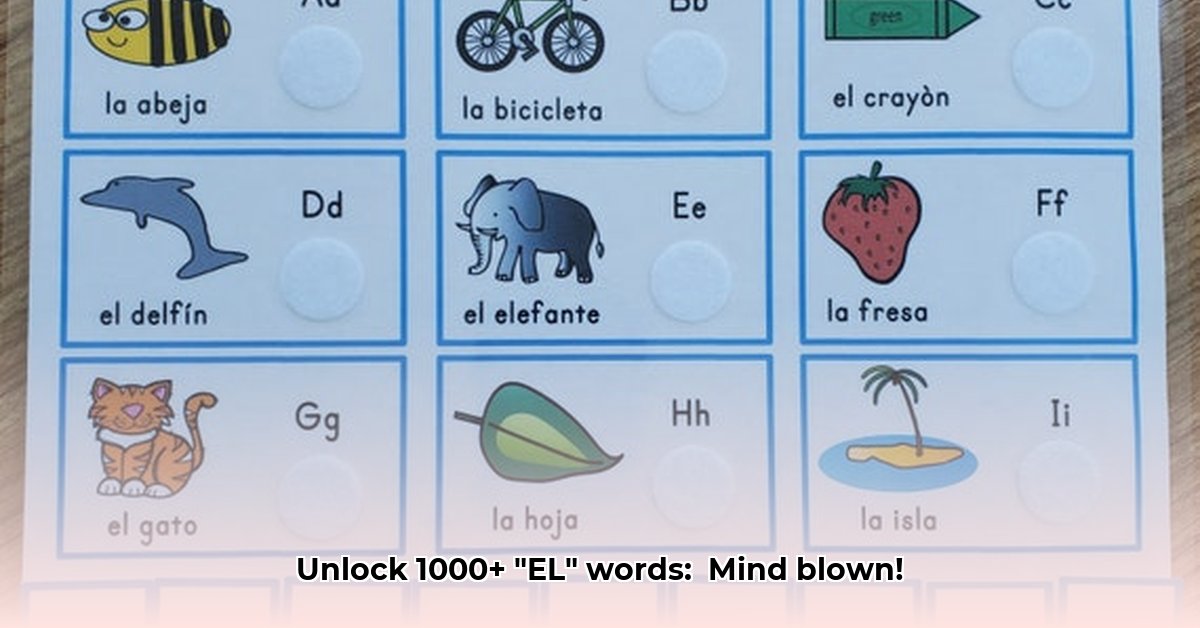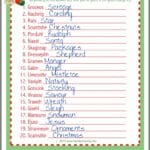This article explores the fascinating world of words beginning with “el,” examining their prevalence, length, grammatical roles, and practical applications in education and wordplay. We’ll delve into the complexities of compiling a definitive “el” word list and discuss the strategic implications for word game enthusiasts. For a similar analysis of words starting with “im,” see this helpful resource: words starting with “im”.
Quantifying the “EL” Vocabulary: A Lexicographical Challenge
Pinpointing the exact number of words starting with “el” proves surprisingly difficult. Discrepancies arise from varying criteria employed by dictionaries and word lists. Some sources encompass archaic or highly technical terms, while others prioritize common usage. This inherent subjectivity in lexicography highlights the challenge of defining a truly “complete” word list and raises important questions about standardization for researchers and educators. Should a universal standard be adopted, and if so, what criteria should guide its development?
Deconstructing “EL” Words: Length and Frequency Analysis
Analyzing word length reveals insightful patterns within the “el” lexicon. Shorter words like “elf” and “elk” appear more frequently than longer counterparts such as “electroencephalography.” This distribution reflects the principles of linguistic economy and the evolution of language for everyday communication. Shorter words often serve as fundamental building blocks, while longer terms denote specialized concepts in fields like medicine or science. This observation prompts further inquiry into the dynamic relationship between word length, frequency, and semantic complexity. Do shorter words evolve into more specialized terms over time, or do they remain relatively stable?
The following table, derived from analyzing multiple word lists, illustrates the inverse correlation between word length and frequency:
| Word Length | Approximate Frequency | Example Words | Word Types |
|---|---|---|---|
| 3-5 | Very High | elf, elk, elm, else, elder, elect | Nouns, verbs, adjectives, adverbs, conjunctions |
| 6-10 | High | eleven, element, elegant, elation, elevate | Nouns, adjectives, verbs |
| 11-15 | Moderate | electrocardiogram, electrophoresis, elongation | Mostly nouns |
| 16+ | Low | electroencephalography, electromyography | Primarily scientific/medical nouns |
This distribution has significant implications for language acquisition and usage. How does the frequency of shorter “el” words influence vocabulary development in children? Does the prevalence of longer, specialized “el” terms pose challenges for English language learners?
Grammatical Diversity: Exploring the Roles of “EL” Words
“EL” words exhibit a remarkable range of grammatical functions. From nouns like “elbow” and “element” to verbs like “elect” and “elude,” adjectives like “elegant” and “elusive,” and adverbs like “elsewhere,” the “el” lexicon provides a rich tapestry for linguistic exploration. This grammatical diversity offers valuable pedagogical opportunities. By categorizing “el” words based on their parts of speech, educators can enhance vocabulary lessons, reinforce understanding of sentence structure, and empower students to express themselves more effectively. How can this approach be adapted for different age groups and learning styles?
Leveraging “EL” Words in Education: A Targeted Approach
A comprehensive “el” word resource empowers educators to tailor vocabulary instruction to diverse learning needs. Analyzing word length, frequency, and grammatical function enables teachers to create targeted lessons that promote deeper engagement and comprehension. For instance, younger learners might focus on shorter, high-frequency words, while older students could explore the etymology and usage of more complex terms. This differentiated approach can also benefit English language learners and students with specific learning disabilities. How can technology be integrated to create interactive and personalized “el” vocabulary activities?
Standardizing “EL” Word Compilation: A Call for Rigor
The absence of a universally accepted “el” word list underscores the need for a standardized methodology. Compiling such a resource requires meticulous attention to inclusion criteria, source selection, data cleaning, and presentation of findings. A rigorous approach, encompassing transparent documentation and peer review, is essential for creating a reliable and valuable tool for researchers, educators, and language enthusiasts. What collaborative efforts are needed to achieve this goal, and what platforms could facilitate data sharing and analysis?
“EL” Words in Wordplay: Strategic Advantages
“EL” words contribute a strategic dimension to word games and puzzles. Shorter “el” words often appear in crossword puzzles and word searches, while longer words can yield high scores in games like Scrabble. Understanding the distribution of “el” words by length and grammatical function provides a competitive edge. Skilled players can leverage this knowledge to anticipate potential plays, optimize word selection, and maximize their scoring potential. How can this understanding be applied to different word games, and what resources can help players refine their “el” word strategies?
Beyond Memorization: Mastering Word Selection in Games
Effective use of “el” words in wordplay extends beyond simple memorization. It requires a nuanced understanding of each game’s rules and strategic considerations. For instance, certain “el” words might be high-scoring choices in Scrabble but less useful in other contexts. By analyzing the game’s dynamics and evaluating available options, players can make informed decisions that enhance their performance. What analytical skills are crucial for successful word game play, and how can players develop these skills through practice and analysis?
- Unlock 6000+ words beginning with he: A comprehensive analysis - April 20, 2025
- Mastering -al Words: A Complete Guide - April 20, 2025
- Master Scrabble: High-Scoring BAR Words Now - April 20, 2025














